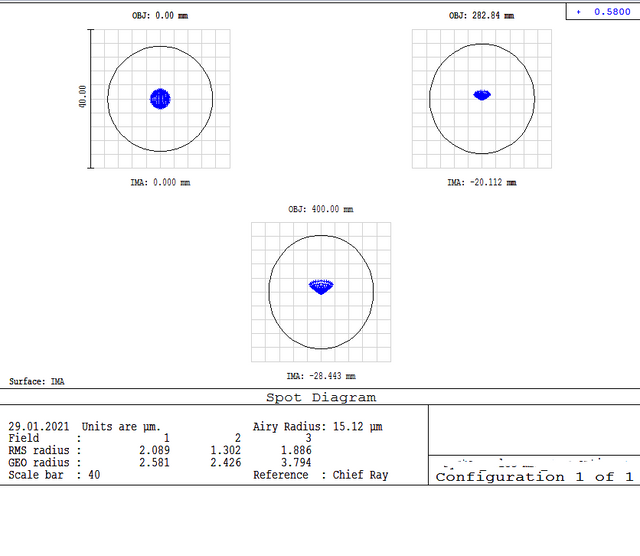Hello,
I set up a telecentric optical system consisting of multiple lenses. Now after optimizing the system my spot radius appears smaller than the airy disk radius. I would assume the airy disk is the smallest possible spot my system would have when free of any aberrations. How is it then possible for the system to have an image quality even better than the airy radius? Is that an error in my system or does Zemax have a different definition of spot radius/airy radius? Iif you need any more details I will try to provide them. Here is an image of the spot diagram:

Any help would be greatly appreciated. Thank you!



